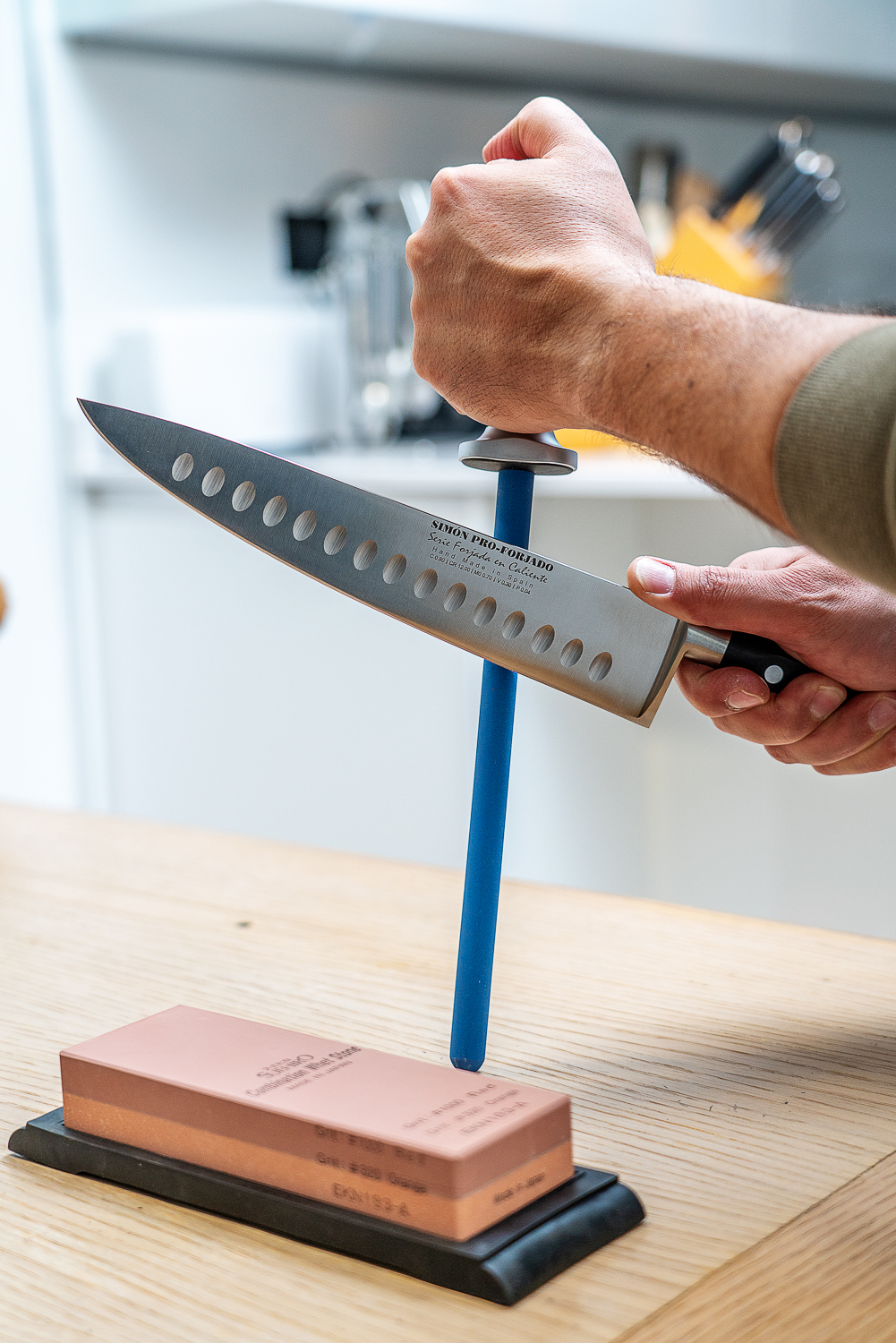The main difference between a Japanese ceramic sharpening wet stone and a ceramic steel sharpening is that the steel sharpening is only valid to maintain the knife's edge, due to the way of cutting and the striking or friction on the cutting boards In the kitchen knife edges tend to bend, and steel sharpening is an effective way to straighten that edge and extend the life of the knife-edge, while ceramic sharpening wet stones are designed for sharpening.
Normally, there are two types of different ceramic grains in Steel sharpeners, medium grain of blue color and fine grain of white color, recommended if it is possible to have both if it is not possible and the knives are not very fine edges, then the blue medium-grain ceramic steel sharpening would suffice. Do not forget to visit our video on the correct way to use a steel or link.
On the other hand, ceramic sharpening wet stones have the characteristic of being able to find them in many types of thicknesses and qualities, recommended the buy of sharpening stones with magnesium binder, of higher quality and that prevents the final stone or conglomerate from being very porous and that the ceramic grains are of quality.
Normally, the estimated time to sharpen a kitchen knife with ceramic stone is usually 20 minutes, five for each side of the blade in a medium-coarse grain first between 300 and 600 grains thick, and another five minutes for each side of the blade by another stone or another face of the stone with a fine medium grain between 1000 and 2000 grains thick.
Always, the ceramic wet stone must be immersed in water for at least five minutes or until bubbles stop coming out of the stone and never use them dry, wetting the stone once we see that the surface dries, so as not to damage it and remove a greater performance of it. Then they should be washed the water tap without soaps by rubbing with a soft sponge and leaving them in an upright position to drain the water and dry.

